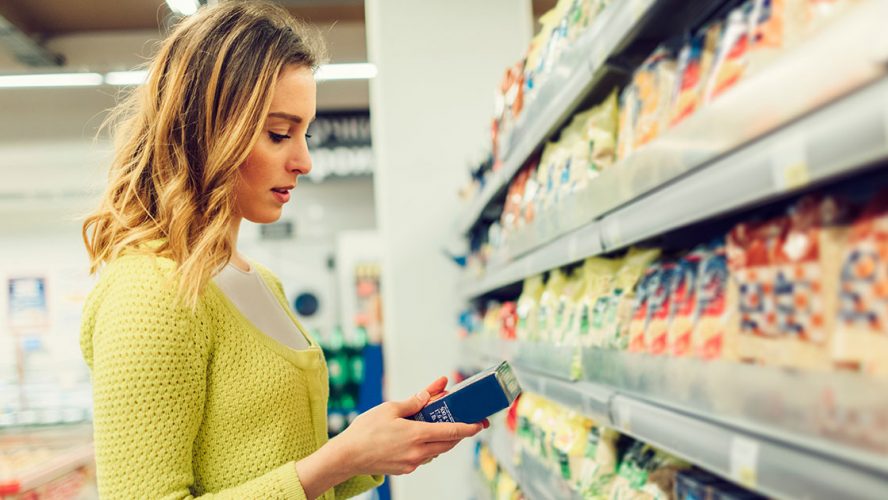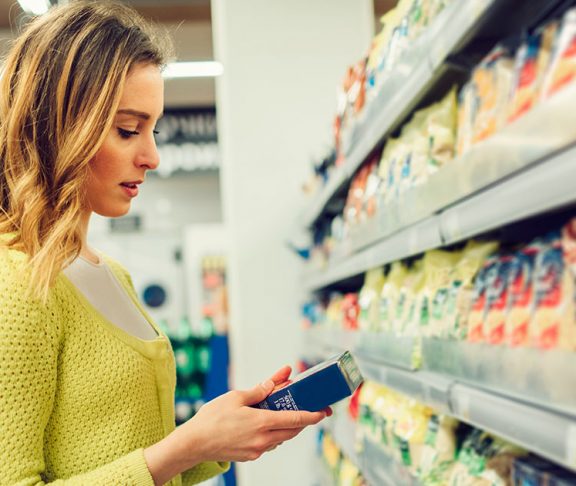You could be eliminating gluten from your diet due to celiac disease or for other reasons. Regardless of the reason, finding appropriate products can be challenging.
The labels on seemingly gluten-free food products in retail stores can be contradictory or confusing. For example, a package may state it is gluten-free, and also “contain wheat”. Since wheat is a common source of gluten, consumers may wonder if this product is safe to eat. You must first understanding what is behind the labels and how “gluten free” is determined and certified. This can help consumers determine if a particular product is what they’re looking for.
In the wheat example, the Food and Drug Administration (FDA) governs gluten-free labeling for the approximately 75 percent of the U.S. food supply it regulates; the FDA issued a regulation requiring products that claim to be gluten-free to contain less than 20 ppm (parts per million) of gluten. Allergen labeling, on the other hand, is governed by a distinct FDA regulation within the Food Allergen Labeling and Consumer Protection Act of 2004 (FALCPA)
The FDA’s gluten-free labeling regulation indicates that ingredients derived from a gluten-containing grain, such as wheat starch, must be sufficiently processed to remove gluten. But under FALCPA rules, wheat starch still needs to be disclosed on labeling, either in the ingredient list or in a separate “Contains wheat” statement, to alert consumers who may have a wheat allergy, apart from gluten concerns. While the two labels appear contradictory, they refer to two separate issues and methods of assessing wheat products.
Behind FDA standards
Although the FDA does not mandate a specific set of standard operating procedures that food manufacturers must follow to use a gluten-free label, it has published guidelines recommending they use effective measures to ensure that any foods labeled as gluten-free comply with its requirements. Such measures may include testing the ingredients to determine their gluten content, requesting certificates of gluten analysis from ingredient suppliers, or participating in a third-party gluten-free certification program.
Food manufacturers have the option of setting up internal procedures to ensure compliance with the FDA’s requirement. Accomplishing this can be complicated, particularly in facilities that process a variety of food products, which may not all be gluten-free.
Meeting gluten-free compliance standards can require establishing safeguards,such as carefully segregated production lines and areas for receiving and storing ingredients, developing procedures for proper handling and labeling of ingredients, determining engineering paramteres for air handling systems, equipment and water pressure controls, and determining appropriate sanitation procedures, as well as other considerations.
For consumers, check for a product that is certified by a certification organization, and not just any organization but one that is accredited itself. This is a clear way to ensure that gluten-free product labeling meets their expectations.
ISO certification for gluten-free options
In addition to FDA standards, perhaps creating further confusion, the International Standards Organization (ISO) develops standards across most industries. Achieving ISO accreditation as a gluten-free certifier requires developing and documenting quality control procedures internally and then allowing review and evaluation by an outside, third-party accreditation body. However, independent accreditations are not all equal. For gluten-free products, typically, they adhere to either ISO 17065 or ISO 17021, which are very different standards.
A certification conforming to ISO 17065 will specify the gluten ppm compliance standard required for certification. These may be even stricter than the FDA’s 20 ppm for products labeled gluten-free. Additionally, they make other specific requirements for product safety, such as testing requirements. ISO 17021 certifies only that the manufacturer is following their own management system; they declare this is adequate for making gluten-free products. However, it doesn’t spell out or certify the ppm compliance levels. This may actually vary between manufacturers with certified management systems. Additionally, it doesn’t allow the certifier to certify the actual product.
Instead, the ISO 17021 certification body audits to ensure that the manufacturer is following their own policies and procedures. Based on this, the manufacturer applies a label to their products to self-certify that the product is safe.
Identifying trusted brands
Gluten-free labeling that issued by an ISO 17065 accredited certification body, provides an important benefit to consumers; it gives them confidence that a product they are purchasing meets applicable gluten-free standards. For manufacturers and consumers, a third-party ISO 17065 accredited certification program offers a number of potential benefits, including:
- Preventing possible customer illness
- Product recalls damaged reputation
- Litigation that might result from an improperly labeled product.
Audits conducted by expert certification inspectors verify that the company is guided by, and meets high standards, in producing its products.
Consumers looking for gluten-free foods will likely find a variety of products available. However, these products may display a range of sometimes confusing labels. When your health depends upon finding quality-assured gluten-free products, you should dig a little in checking the labels and certifications; learn exactly what they mean.

